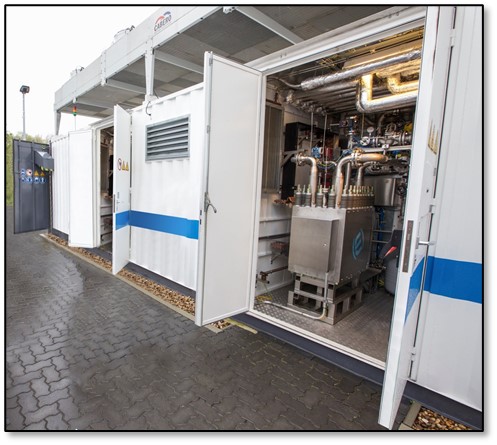Installation
Based on their design and function, electrolyzers cannot be electrically classified and therefore are always installed in non-classified areas. Installation locations should be well ventilated to mitigate hydrogen leaks through adequate air dilution. Non-classified areas do not preclude auxiliary equipment from being electrically classified. Users should consider which components will shut down during a fault and their ignition potential if power is to remain on. For example, mechanical fans should be non-sparking and/or electrically classified and stay on when a hydrogen leak is detected.
If electrolyzers are installed outdoors, they should be protected from the weather according to manufacturer instructions. The potential for leaking hydrogen to accumulate under overhead structures should also be considered.
Best practice includes adherence to the electrolyzer manufacturer’s installation requirements as well as local jurisdiction installation codes. Selecting electrolysis equipment that is agency certified/listed to an accepted electrolysis safety standard will help gain safety authority approval of the installation.
References
CGA G5.5, Hydrogen Vent Systems
CHS Webinar: Safety of Water Electrolysis
CSA/ANSI 22.2 No. 22734 (to be published in 2023)
EIGA Doc 154 09 E, Safe Location of Oxygen and Inert Gas Vents
EIGA Doc 211 17, Hydrogen Vent Systems for Customer Applications
IEC 61010-1, Safety requirements for electrical equipment for measurement, control, and laboratory use - Part 1: General requirements
ISO 22734, Hydrogen generators using water electrolysis — Industrial, commercial, and residential applications (current version 2019)
ISO/TR 22734-2, Hydrogen Generators Using Water Electrolysis – Part 2: Testing guidance for performing electricity grid service (to be published in 2023)
NFPA 2, Hydrogen Technologies Code
Safety Planning for Hydrogen and Fuel Cell Projects


